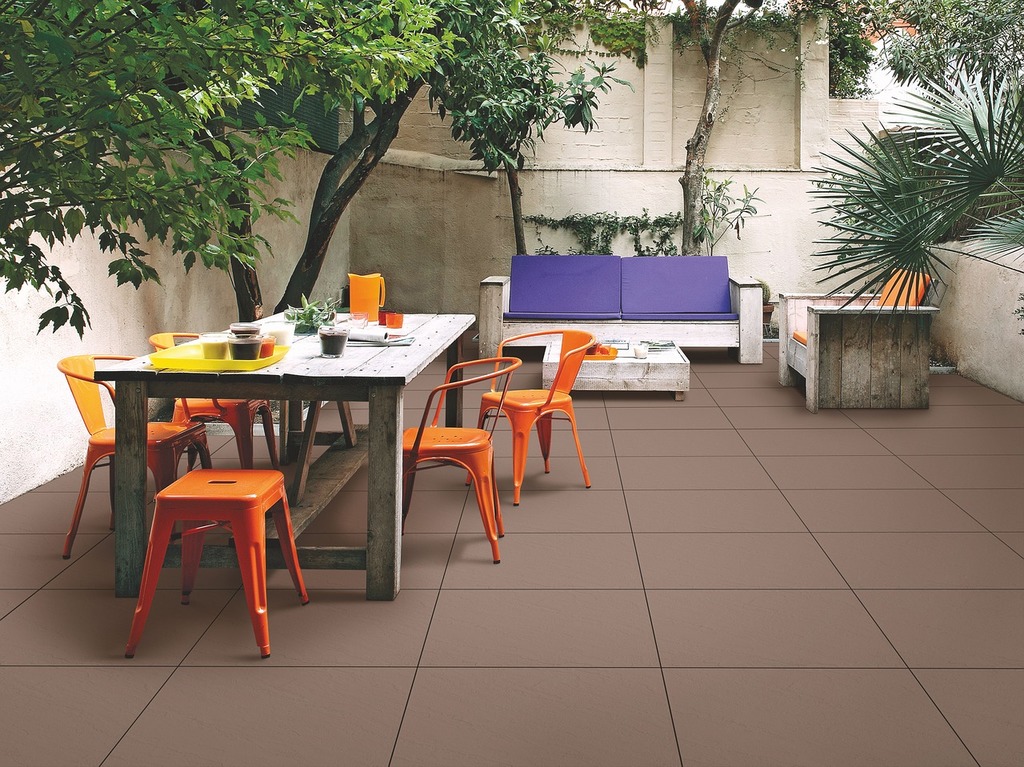Discover how outdoor floor tiles can elevate your garden from basic to breathtaking, creating an elegant outdoor living space that withstands British weather while maintaining its stunning appeal.
Creating Your Dream Outdoor Space with the Perfect Tiles
Transforming your garden into a sophisticated outdoor living area has become increasingly popular in the UK, with a remarkable 65% increase in outdoor renovation projects since 2020. Outdoor floor tiles have emerged as a game-changing solution, offering the perfect blend of durability, style, and practicality for British gardens. Whether you’re creating a cosy patio, a stunning pool surround, or a contemporary entertaining space, the right outdoor tiles can dramatically enhance your property’s aesthetic appeal while providing a hard-wearing surface that stands up to our challenging weather conditions.
Understanding Outdoor Tile Options
Porcelain Tiles: The Ultimate Outdoor Solution
Porcelain tiles have established themselves as the gold standard for outdoor flooring, particularly in the British climate. These tiles boast an impressively low water absorption rate of less than 0.5%, making them exceptionally resistant to frost damage and temperature fluctuations. Modern manufacturing techniques have allowed porcelain tiles to mimic natural materials perfectly while offering superior durability and minimal maintenance requirements.
- Frost-resistant properties ideal for UK winters
- Superior strength with breaking strengths exceeding 1300N
- Available in various sizes from 300x300mm to large-format options
- UV-resistant colours that won’t fade in sunlight
- Extremely low maintenance requirements
Natural Stone Options
Natural stone tiles bring timeless elegance to outdoor spaces, with each piece offering unique patterns and textures. Popular choices include:
- Slate: Offering excellent slip resistance and natural split-face texture
- Travertine: Known for its classic Mediterranean appeal and cooling properties
- Granite: Providing exceptional durability and striking natural patterns
- Limestone: Perfect for creating a soft, traditional look
Contemporary Alternatives
Modern technology has revolutionised outdoor tile options, introducing innovative solutions that combine practicality with contemporary design. Wood-effect porcelain tiles have seen a 40% increase in popularity over the past year, offering the warmth of timber without maintenance concerns. Decorative patterns and geometric designs are also trending, allowing homeowners to create distinctive outdoor spaces that reflect their personal style.
Essential Considerations for Outdoor Tile Selection
Weather Resistance and Durability
When selecting outdoor floor tiles for British weather conditions, certain technical specifications are crucial. The ideal outdoor tile should have a thickness between 15-20mm to ensure adequate strength and stability. Additionally, look for tiles with:
- Water absorption rate below 3%
- Frost resistance certification
- Class 4 or 5 abrasion resistance
- UV resistance for colour stability
Safety First: Slip Resistance
Safety should never be compromised when selecting outdoor tiles. The UK’s Health and Safety Executive recommends a minimum R11 slip resistance rating for external flooring. Modern outdoor tiles often feature textured surfaces or specific anti-slip treatments, providing secure footing even in wet conditions. For pool areas, consider tiles with an R12 or R13 rating for maximum safety.
Aesthetic Considerations
Creating a cohesive outdoor design requires careful consideration of:
- Colour harmony with your home’s exterior
- Tile size in proportion to your space
- Pattern layouts that complement your garden design
- Texture variations for visual interest
Professional Installation Guide
Surface Preparation
Proper installation begins with meticulous surface preparation. The substrate must be completely level, clean, and stable. For concrete bases, ensure:
- Minimum 28 days curing time
- Less than 2% moisture content
- Appropriate falls for drainage (minimum 1:80 gradient)
- Waterproof membrane application in wet areas
Installation Best Practices
Professional installation requires attention to several critical factors. Grout lines should be minimum 5mm wide for outdoor installations, allowing for thermal expansion and proper drainage. The installation process must include:
- Use of weather-resistant adhesives and grouts
- Proper expansion joints every 4-5 metres
- Full tile coverage with adhesive
- Adequate protection during curing
Maintenance and Care
Regular maintenance ensures the longevity of your outdoor tiles. Establish a care routine that includes:
- Weekly cleaning with appropriate pH-neutral cleaners
- Bi-annual deep cleaning and inspection
- Prompt attention to any damage or loose tiles
- Resealing natural stone tiles annually
Making the Right Choice for Your Garden
Climate Considerations
British weather demands specific considerations when selecting outdoor tiles. Recent climate data shows that UK gardens experience an average of 156 days of rainfall annually, making water resistance and drainage crucial factors. Choose tiles that specifically address these challenges while maintaining their aesthetic appeal throughout the seasons.
Design Integration
Creating a seamless transition between indoor and outdoor spaces has become a key trend, with 78% of UK homeowners prioritising this aspect in their renovation projects. Consider using complementary tiles in different finishes to maintain design continuity while ensuring appropriate slip resistance for each area.
Maximizing Your Investment
Investing in quality outdoor floor tiles can increase your property’s value by up to 10% when properly installed and maintained. As specialists in outdoor tiling across Bromley and Kent, we understand the importance of selecting the right tiles for your specific needs. Our expert team can guide you through the selection process and ensure professional installation that stands the test of time. Contact Bromley Tilers today to transform your outdoor space with beautiful, durable floor tiles that enhance your home’s appeal and functionality for years to come.
FAQ
Do you need to waterproof under outdoor tiles?
ANSWER – It depends on the application on whether waterproofing under a tile installation is necessary. If it is in a wet application and in some exterior applications, then it is necessary to waterproof the tile assembly.
What is the problem with porcelain paving?
Occasionally, extreme temperatures can lead to expanding and cracking, as well as subsidence, hard impacts, moisture damage, chemical damage through improper maintenance or being installed when wet can lead to cracking.
What goes under outdoor tiles?
MATERIALS NEEDED TO LAY OUTDOOR TILES Sandbags, mortar and cement for the base.
Which type of tile is not recommended for outdoor use?
Ceramic tiles are simply not frost proof and therefore if laid outside will ‘pop’ or crack in cold weather. There is too much moisture left in the tile during the manufacturing process meaning its density is much lower than that of porcelain leaving room for moisture to expand when it freezes.
Sources
[1] https://www.countryfloors.com/product-category/outdoor-tiles-pavers/
[2] https://www.flooranddecor.com/explore-outdoors
[3] https://www.stonetiledepot.com/tile/outdoor-tiles/



